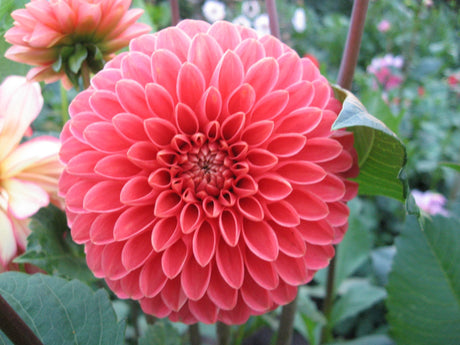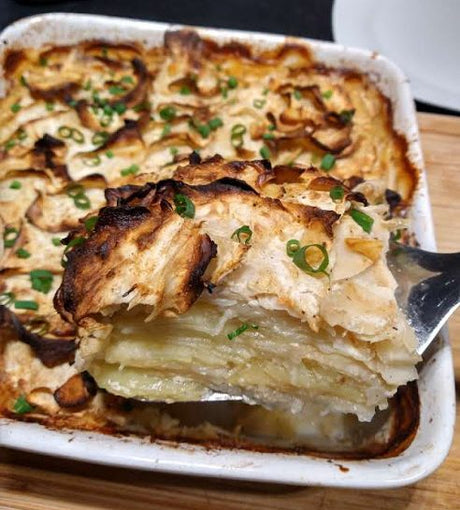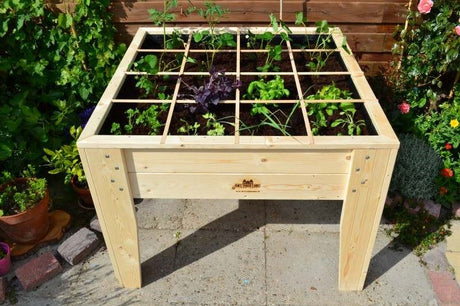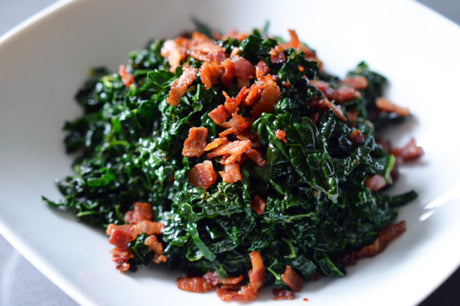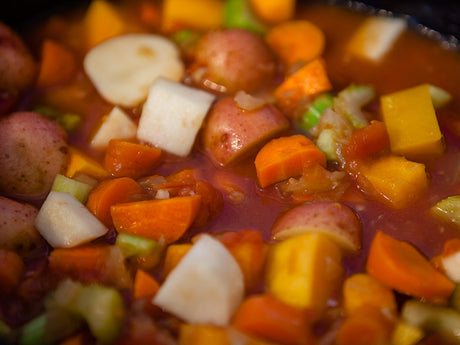Quick start ⚡ Quick start info for sowing leeks ⚡
🌱 Sowing & planting
Leek ( Allium ampeloprasum var. porrum ) is a slow-growing leafy vegetable From the onion family. With proper planning, you can harvest leeks from your own garden almost year-round.
- Sowing depth: 0.5–1 cm.
- Sowing method: sow thinly for transplanting later. Summer leeks are often sown in pots or under glass, while winter leeks can also be sown directly in the open ground.
- Germination temperature: around 16 °C.
- Germination time: 🕒 about 10–12 days.
- Planting distance (general): 45 cm between rows, 15 cm between plants.
- Planting distance (summer leek): 25 cm between rows, 10 cm between plants.
- Planting out summer leeks: when the plants are about 3–5 mm thick.
- Plant out autumn and winter leeks: when the leeks are about pencil thick.
Cultivation technique: planting leeks in furrows
Leeks are traditionally planted in furrows to get a long, white shaft:
- Cut back the leek leaves until the plant is about 20 cm long.
- Cut the roots back to about 5 cm.
- Make a trench 15–20 cm deep.
- Use a planting stick to make planting holes about 3cm in diameter and 15cm deep, at the correct planting distance.
- Place the leek in the hole, but don't fill the hole completely: leave it largely open.
- Water with water so that mud flows into the planting hole and the roots can take hold.
- When the plants are larger, you can cover the leeks with soil from the furrow. This way you get more white on the leek – the tastiest part.
Harvest when the stems are about 4–6 cm thick.
📅 Growing times throughout the year
There are various cultivation methods for leeks, each with its own sowing time and harvest period:
- Very early (cutting leek / old young man's leek): sow a variety of winter leek in July, plant out in September at a planting distance from summer leek (25 × 10 cm) and harvest from May to June the following year.
- Summer leek: sow under glass from mid-January to February, plant outside from late March to May, harvest from late July to October.
- Early autumn leek: sow under glass from mid-February to March, plant outside from May to mid-June, harvest from September to mid-November.
- Late autumn leek: sow indoors in March or outdoors from early to mid-April, transplant outdoors from late May until early July, harvest from mid-November to December.
- Winter leek: sow under glass in March or outdoors in April, (re)plant outdoors from the end of May to mid-July, harvest from January to about mid-May.
Basic information of leek ( Allium ampeloprasum var. porrum )
- Crop group: leafy vegetables.
- Crop family: onion family.
- Height: about 30–60 cm.
- Growth cycle: 🕒 approximately 200–255 days, depending on variety and cultivation method.
- Frost resistance: yes for winter leeks; summer and autumn leeks are less winter-hardy.
- Root system: 30–45 cm deep.
- Fertilization: leeks require a lot of nitrogen, little phosphorus and a fair amount of potassium. Use cow manure pellets, compost and a universal granular fertilizer, but avoid fresh manure: it attracts leek fly and leek moth.
- Soil: pH between 6.5 and 7.0, preferably very close; deviations result in small leeks and a greater risk of rust.
Location & water requirements
- Sun: 🌤️ Moderate sun to partial shade. Leeks grow well in an open bed. with sufficient light.
- Water requirements: 💧💧 Water regularly; ensure the soil is evenly remains moist, but not soaking wet.
Good neighbors and bad neighbors
✅ Good neighbors
- Celery
- Root
- Apple (as a nearby tree, a classic combination in orchard gardens)
❌ Bad neighbors
- Legumes (such as beans and peas)
Dangers & Concerns
The main pests of leeks are leek moth and the Leek or onion fly . The larvae eat tunnels in the leaf and stem. Protect leeks preferably with fine insect netting and follow your crop rotation good to limit the pressure.
🧺 Harvesting & storing
Harvest leeks when the stems are about 4–6 cm thick. Use a pitchfork to cut the leeks. to loosen it from the ground and do not just pull on the foliage: this will avoid damage.
Leeks, especially the winter varieties, can often simply overwinter in the ground and be harvested as needed. This way you'll have fresh leeks all winter long.
Nutritional value (per 100 g cooked leek, without salt)
- Energy: 31 kcal
- Fat: 0 g
- Carbohydrates: 8 g
- Proteins: 1 g
- Fiber: 1 g
- Sugars: 2 g
- Vitamins: A, B6, C and K
- Other nutrients: folic acid, iron, magnesium and manganese.
Table of Contents:
Introduction: Homegrown leeks are so much better
The quality of home-grown leeks, grown with plenty of compost , organic matter, and humus, is like comparing the Champions League to amateur football in the D division. The same, yet incomparable. You can prepare young leeks like asparagus sautéed in sizzling butter. The delicious white stems of mature leeks are delicious stewed, and the blue-green part of the leek plant adds flavor to any vegetable broth or soup. Growing leeks is easy. You can sow leeks intermittently from January to April and harvest leek plants from late August throughout the winter until February.
Like most other vegetables, you'll harvest better, more beautiful leeks in a sunny location with soil rich in organic matter, compost, and humus. Here are some basic principles of leek growing.
Growing your own leeks is a true delight for any gardener. With a variety of varieties to choose from, you can enjoy this versatile vegetable all year round. Whether you choose summer, autumn, or winter leeks, each variety has its own unique flavor and texture, so you can always try something new in the kitchen. Leeks are not only delicious but also exceptionally healthy: they're packed with minerals and other valuable nutrients that will give your family extra energy.
The quality of home-grown leeks, grown with plenty of compost, organic matter, and humus, is like comparing the Champions League to amateur football in the D division. It's the same game, but still incomparable. You can prepare young leeks like asparagus and sauté them in sizzling butter. The delicious white stems of mature leeks are delicious stewed, and the blue-green part of the leek plant adds flavor to any vegetable broth or soup. Growing leeks is easy. You can sow leeks at intervals from January to April and harvest leek plants from late August throughout the winter until February.
Like most other vegetables, you'll harvest better, more beautiful leeks in a sunny location with soil rich in organic matter, compost, and humus. Here are some basic principles of leek growing.
1. Growing leeks is not quite Vivaldi, barely three seasons
You can grow leeks in three different crops: summer , autumn , and winter . Growing young leek plants from seed takes 80-90 days for all crops. For a good growing schedule, it's important to know that the growth period after planting varies considerably.
Summer leeks are ready in 80 to 100 days, autumn leeks take 80-180 days and are suitable for late autumn, and winter leeks will last in your vegetable garden for 180-300 days.
You can harvest autumn and winter leeks until the end of winter. If you sowed and planted them late, your leeks may still be too small for the winter. Don't worry, after winter, the leeks will continue to grow, and you'll have winter leeks very early in the season.
Leeks can be pre-sown in a container under glass, which is particularly useful for early cultivation.
Leeks are closely related to the onion species (allium), and you have to admit, the smell of a freshly cut leek… does indeed sound a bit like an onion. And sometimes, when you're cleaning leeks, you suddenly become emotional and tears well up in your eyes.
Leeks usually don't flower until the second year, but under certain conditions, the plant can bolt and flower in the first year. This often happens due to a lack of nutrients, good soil structure, or water. These three deficiencies are important to prevent for a good harvest.

Winter leek overwinters in the snow
2. Growing Leeks for Highly Nutritious Meals
Here is a brief summary of the nutritional values in 100 grams of leek:
- 130 kilojoules
- 2 g protein
- 0.3 g fat
- 5 g carbohydrates
- 250 mg potassium
- 5 mg sodium
- 60 mg calcium
- 1 mg iron
- 30 mg phosphorus
The vitamin and nutrient levels vary greatly between the white and green parts of the leek, with the green parts containing the most vitamins. So don't throw them away in the kitchen; use them in a hearty soup. Mmm, delicious to drink while taking a break from gardening. You'll be ready to go again in no time.
3. Growing leeks – Which varieties do I choose?
The varieties can be classified as summer leeks , with light green leaves, a relatively long white stem, and a tender texture. This makes them quick to use, as summer leeks don't do well in autumn weather. Examples include Swiss Giants and Bulgarian Giants. The latter is best eaten immediately, as it deteriorates quickly in autumn. Bulgarian Giants are, in some cases, slightly more susceptible to viruses, but they are less susceptible to thrips.
Tip: Leeks, like other leafy vegetables, are often included in a crop rotation with crops like cabbage or celery. This helps maintain healthy soil and optimize yields.
Generally, Autumn Giant varieties are used and recommended. Autumn leeks have a relatively short to moderately long stem, and the leaves are broad, grayish-green, and thick. The autumn variety is the Blue-Green Autumn , which also has an upright leaf position and is less susceptible to disease.
And lastly, there's the winter leek , with dark gray-green leaves that aren't too wide. It has moderate thickness and a short stem, but is also quite hardy. For winter leeks, it's best to use the Blue-Green Winter leek because this variety is very cold-resistant.
.



